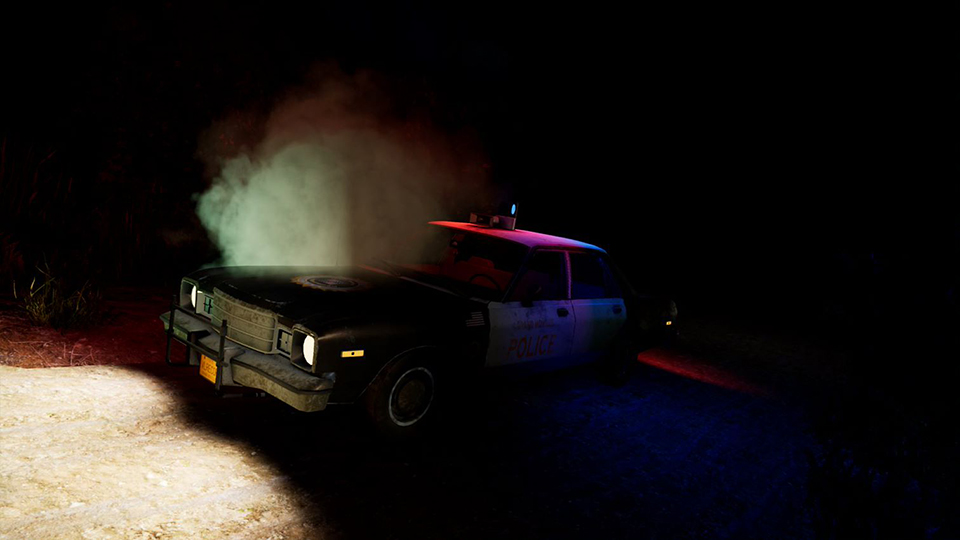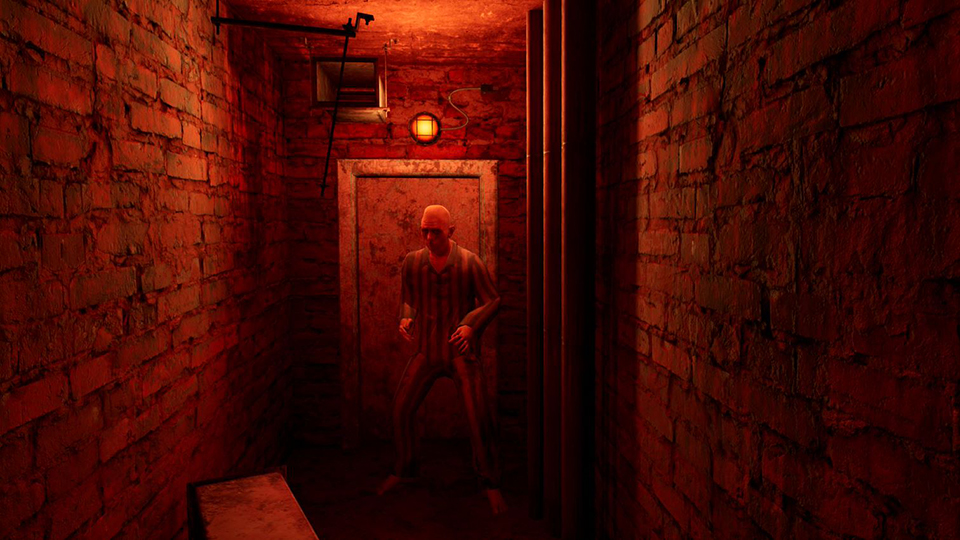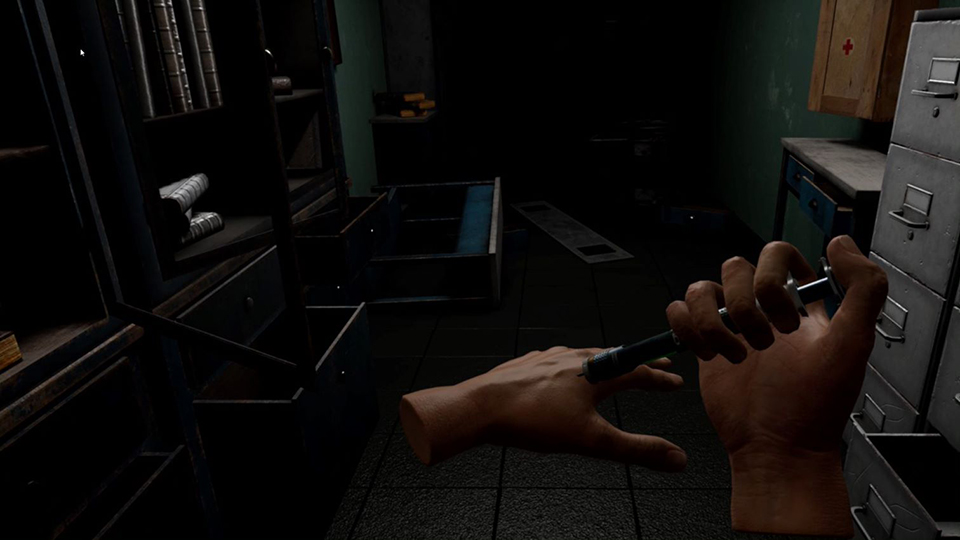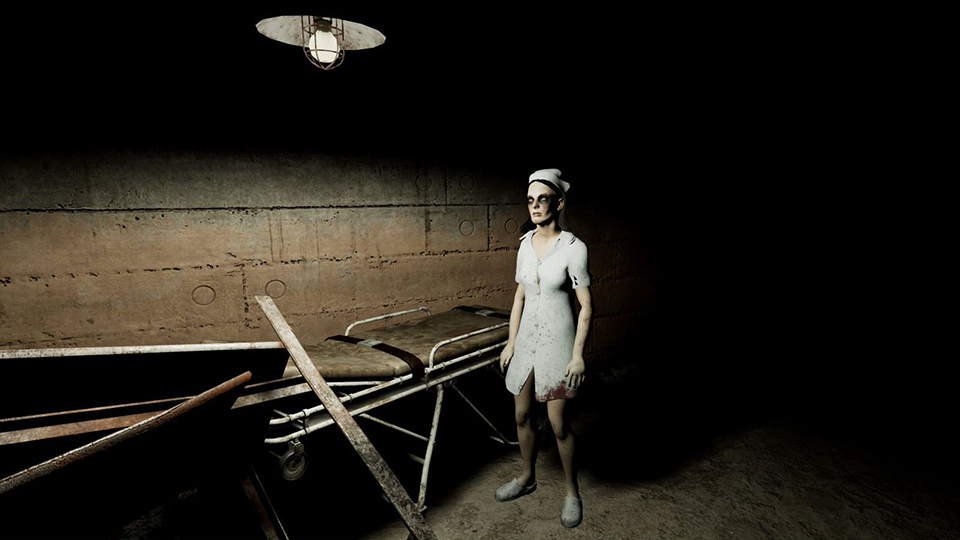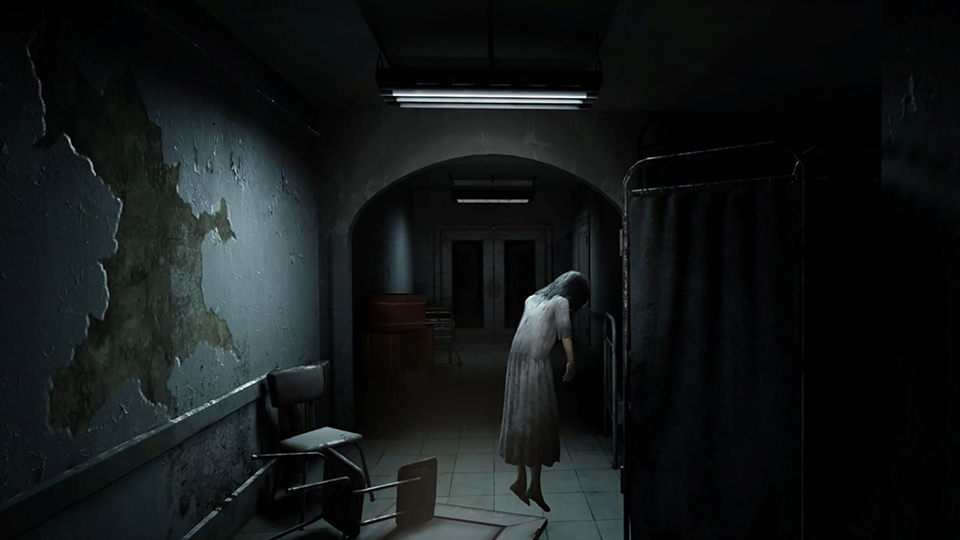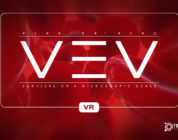Developer / Publisher – Split Light Studio / Perp Games
Price – US $14.99 / CA $19.99 / EU €14.99 / UK £12.99
Release Date – April 18th, 2023
Input – 2 x Sense Controllers
Play Area – Sitting, Standing
Store Links – PlayStation
Reviewed on – PS5/PSVR 2
Afterlife VR is an action horror game that puts you in the role of Adam Bernhard, a young rookie police officer on a night patrol. Armed with a pistol and a flashlight you must uncover the secrets of the Black Rose Mental Hospital while keeping yourself from being an inpatient. This came out a while back on PCVR but is now coming to PSVR 2 April 19th in North America and the 20th everywhere else. I never played it on PC so this one was actually a bit of a surprise in a few ways, so make sure you stick around to see whether this is worth adding to your PSVR 2 library.
The story (I”ll keep it brief and spoiler free) is that your younger sister, Allison, was recently sent to the Black Rose Mental Hospital and you’ve been sent to investigate a report of missing patients and hospital workers. Arriving during a rainy night, the place seems deserted, so of course you head in alone….because it’s a horror game. And that’s all I’m going to tell you. Afterlife VR only runs about the length of a horror movie, playing like a mystery horror film and clocking in around 90 minutes to 2 hours depending on how much you explore or how long you spend on the handful of puzzles. The story here isn’t anything special, but when combined with the creepiness of the game and multitude of jump scares, it makes for a fun little time in VR if not an overly memorable one. Just keep your expectations in check.
Now those expecting another Resident Evil game, you can drop those expectations right now, as Afterlife VR is not only an indie game, but a far simpler and more straightforward experience in every possible way. Gameplay wise I was actually fairly impressed how well Afterlife played, as indie horror games tend to be a little rough around the edges and filled with a certain amount of jankiness. Thankfully Afterlife feels pretty polished here, controlling quite well despite its odd run mechanic that has you pressing forward on the right stick to run. This I could have done without, as it simply made turning and running feel like a twin stick shooter, but it never got in the way of the gameplay. Additionally I’m not sure what I think of the game’s choice to auto open and close cabinets and drawers once you grab them. You will spend a lot of time opening and searching in the game and it certainly makes for a less janky time of the whole process, but any time a game takes control of your arms and hands in VR it always feels a bit immersion breaking to me. Regardless, this is a minor gripe and when combined with the game’s basic but functional pop-up inventory system for each hand, the mechanics of grabbing, storing and using found items was painless. Early parts of the game see you armed with only a flashlight. It burns through batteries so early on you will get used to searching high and low for additional batteries. In addition to batteries, health syringes and ammo for the pistol you will eventually get will make up the majority of your inventory usage short of the odd key or mission item.
Now first and foremost, Afterlife VR is a horror game, how successful it is at that I guess really depends on how you handle scares in VR. It does an admirable job of keeping the creep factor high enough throughout its short run time by pulling on all the classic horror tropes. Much of your time spent here in Black Rose Mental Hospital will see you looking for keys and numeric codes to open doors. Mixing things up are a handful of puzzles, but nothing too difficult, as my dumb ass blew through them. So, I don’t know if I can really call them puzzles so much as makework tasks as they primarily consist of finding items and doing things to gain access to new areas. Personally, I like that the game didn’t do a hard stop while I tried to figure out some mind bending puzzle, but others might be disappointed here. As a whole the game keeps a pretty steady pace forward, as it definitely seems to want to deliver on a movie style of pacing and length. As such, it doesn’t waste much time in giving you a pistol, which thankfully makes Afterlife less of a walking simulator as most VR horror games often are. Unfortunately, the combat here is incredibly underdeveloped and unsatisfying with the whole process of shooting deranged patients coming off lifeless, bland and easy. Honestly, it’s essentially one step up from pointing your fingers at enemies and saying “bang”. Making matters worse, ammo and health was always in ample supply with the latter almost never being necessary as I rarely took any damage. Now, I must confess I was playing on the normal difficulty setting and playing on hard might help in this regard. Unfortunately, the shooting is so ‘meh’ and the enemies’ attacks so simplistic that I can’t see it making much of a difference. This is such a missed opportunity as ammo and health conservation can make games like this all the better. Later parts of the game will introduce the ability to use telekinesis to pick up and throw items at enemies, but unfortunately this too is woefully underdeveloped both in the narrative and in gameplay and is really only utilized for a few late game puzzles and the end game boss.
On the visual side of things, Afterlife VR will certainly never be confused for a AAA offering such as Resident Evil 8, and while I know it’s not fair to compare an indie title to RE8 it is honestly hard not to, as the bar has been set pretty high. However, in the Headset Afterlife VR comes off as above average and makes up for its detailed but lower resolution textures with an excellent use of dynamic lighting from the flashlight. Light from the flashlight’s beam bathes the game’s hallways and dilapidated rooms in a shadow-filled creepiness that definitely elevates the whole game. This is made all the more effective with the PSVR 2’s high contrast OLED display that really sells the whole experience. Afterlife VR does suffer though from what appears to be an overreliance of anti-aliasing which in addition to the game’s lower resolution textures just gives the whole game a softness which had me second guessing my eyeglass prescription. Think Switchback but without the horrible pop in. Other areas of the game, such as character models and their animations, also come off a little undercooked and this does hinder Afterlife somewhat in delivering on the scares.
Thankfully the audio side of things helps to elevate the game where its visuals can’t, filling the sound mix with that horror movie weight to its silence…you know what I mean. Afterlife VR never fails to miss an opportunity to make a door creak or drop a random sound in the background to raise the hairs on the back of your neck, and it loves to use the shock of a loud sound to get a jump scare out of players. At times the sound of your footsteps can be deafening, and Afterlife relishes in knowing when to keep the sound mix minimal and nuanced so it can repeatedly catch players off guard. As such, players who are easily susceptible to jump scares are sure to have a good time here. Voice acting does come off a little indie here, but still manages to deliver the goods without sounding too cheesy, which I was thankful for considering our protagonist does like to talk to himself.
And that brings me to my final thoughts and review score. Afterlife VR definitely doesn’t scream next gen VR, and it isn’t the next great thing to play on your brand new headset. This is paint by numbers VR horror, but I’m not saying don’t play it. Though it does nothing overly special story wise and comes off pretty underdeveloped in its combat, those who love horror games and are looking for a scary time in VR are likely to find Afterlife’s polished movement controls and creepy atmosphere compelling and worth the low asking price.
Afterlife is a short experience that doesn’t have many new ideas, but it also doesn’t overstay its welcome, offering up a slice of VR horror entertainment for those looking for a little aperitif after finishing Resident Evil 8 and waiting for the upcoming Resident Evil 4 remake.
Perp Games provided The VR Grid with a press code for this title and, regardless of this review, we thank them for that!

